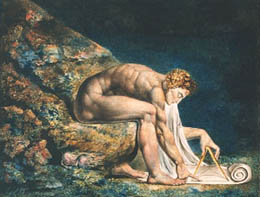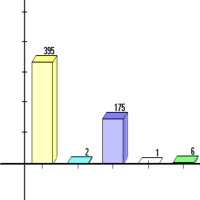The painting is of Newton, by William Blake (1805). The original is in the Tate Museum in London, England.
 |
The painting is of Newton, by William Blake (1805). The original is in the Tate Museum in London, England. |
|
We finished Chapter 5 by doing some examples, and nearly finished Chapter 6.
| We discussed study techniques. The discussion was perhaps particularly relevant to studying Physics. Here is a one page document summarising the discussion, in pdf format. |
Here is a pdf of the questions that we asked in class today. |
Almost 80% of the class got this correct: that your astronaut friend is richer; Answer B. Well done! If you missed this question you need to review weight and mass in the textbook
Just over 80% of the class got this one correct too. The point is that for someone in free fall, some method of measuring the quantity of gold besides trying to measure its weight will be necessary. When we get to Chapter 9 we will discuss such a method. So the correct answer to this question is D: you cannot tell who is richer.
Here is the distribution of answers to this question. (Reminder: the ticks on the vertical axis are every 20% of the class, and the ticks on the horizontal axis correspond to answer A, B, C, D, and E respectively.) About 70% of the class answered incorrectly that friction always slows things down. The figure accompanying the question is a big hint: the only horizontal force acting on the upper block is friction, which causes it to accelerate. Thus the right answer is C: friction can both speed things up and slow things down. |
 |
If you are still bothered by this, consider the following situation:
You are standing motionless on a surface that is not frictionless. You then take a step.
- Have you accelerated?
- What caused that acceleration? (Hint: what would happen if you tried to take the step while standing on a frictionless surface such as super-slippery ice?)
- What is the direction of the force that caused your acceleration?
Double MISTEAK! In proving that the path of a projectile is parabolic, I got it somewhat wrong both on the PowerPoint on the side screens and in the journal. The journal has been corrected in purple, and the pdf of the PowerPoint on the sidescreens has also been corrected! These updates occurred at 8 AM on Thursday September 28.
| Here is a pdf of the PowerPoint on the side screens. | |
Here is a pdf of today's Journal |
Chapter 6: 10, 21, 33, 64
| The arrows let you jump to the previous/next class summaries. | |